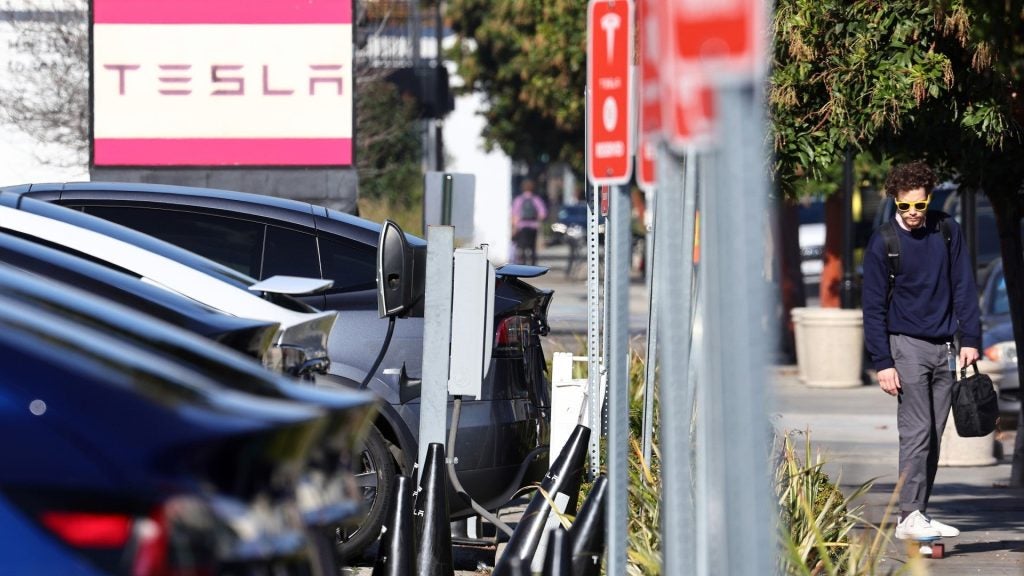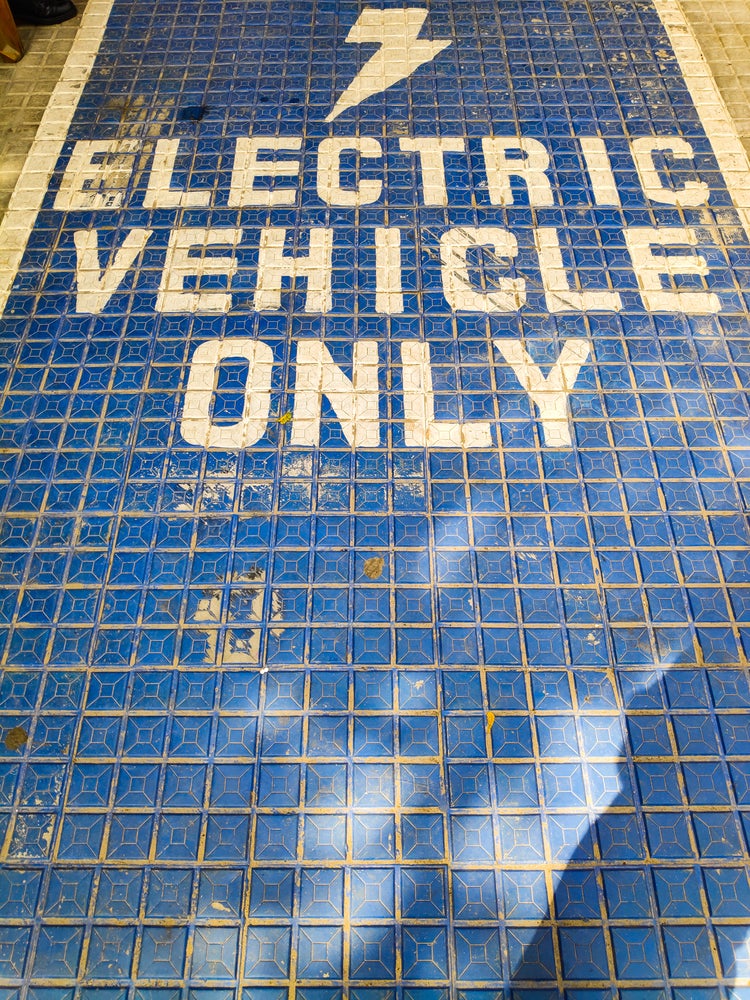The electrification movement is beginning to gain traction around the world. Car manufacturers are doubling down on electric investment as consumer appetite for zero-emission vehicles continues to grow. Chris Lemmon writes.
The latest figures from the Society of Motor Manufacturers & Traders (SMMT) reveal that while the UK new car market saw total registrations drop 4.9% year on year, registrations for battery electric vehicles (EVs) were up 61.7%.
Market share remains low, at 1.1%, but it has almost doubled year on year, and is showing no signs of slowing.
Car battery technology remains in its relative infancy, reflected in the substantial cost disparity between EVs and their internal combustion engine (ICE) counterparts; however changing attitudes to ownership may provide determined businesses and individuals with a fast track to electric cars.
Growing Appetite
There has been a concerted effort in recent years to highlight the detrimental impact that ICE vehicles have on the environment, most notably with the UK government commitment to ban ICE engines by 2040 as part of its Road to Zero Emissions policy.
In the meantime, a rising number of towns and cities are exploring the idea of clean air zones, zero-emission zones and other environmental quality measures.
How well do you really know your competitors?
Access the most comprehensive Company Profiles on the market, powered by GlobalData. Save hours of research. Gain competitive edge.

Thank you!
Your download email will arrive shortly
Not ready to buy yet? Download a free sample
We are confident about the unique quality of our Company Profiles. However, we want you to make the most beneficial decision for your business, so we offer a free sample that you can download by submitting the below form
By GlobalDataLondon recently introduced its Ultra-Low Emission Zone (ULEZ), which will encompass the entire area between the North and South Circular roads by 2021, while Leeds and Birmingham are set to follow suit with similar schemes next year.
“As cities across the UK start to introduce new air quality measures, an increasing number of customers are demanding ultra-low emission vehicles and demand for pure EVs is on the increase,” says Gerry Keaney, chief executive at the British Vehicle Rental and Leasing Association (BVRLA). “Vehicle taxation, financial incentives and environmental concerns are what tend to drive demand for electric.”
For fleet managers, early investment in EVs can also be beneficial. Stéphane Renie, head of corporate responsibility at ALD Automotive, notes benefits beyond the reduction of a company’s environmental footprint.
“Another benefit is portfolio diversification,” he explains. “We have a clear economic interest in diversifying our portfolio, to have a fleet profile which is as attractive as possible when the day comes to resell the cars on the used market.”
Renie goes on to explain that the electrification process is also a learning curve for ALD, providing it with the best possible experience for success in the future.
“What EVs imply is a complete overhaul of our business model. There is not one element of our value chain which is untouched – from price setting to consultancy capabilities to service definition. Onboarding these vehicles now enables us to acquire very precious experience in the market, testing and learning as we go.”
Risky Investment?
Despite the benefits, investing heavily in EVs remains a tough decision for fleet managers due to the continued uncertainty surrounding the market.
According to Keaney: “When choosing to go electric, fleet managers face a number of challenges, particularly around the adequate supply of suitable vehicles, range anxiety and the availability of appropriate charging infrastructure. Add to this the issue of additional cost and unknown residual values, and it is apparent why fleet managers face some difficult decisions when it comes to electrifying their fleets.”
Ashley Barnett, head of fleet consultancy at Lex Autolease, also notes hesitancy among businesses with company car fleets. “A lot of the feedback we have had back from companies is that it is very difficult to commit to the investment needed without having some certainty that the government is going to put in place a tax environment that can encourage change,” he explains.
The UK government has responded to industry recommendations, announcing this month that all zero-emission company cars will not be required to pay benefit-in-kind (BIK) tax for 2020-21. The commitment offers a further incentive to businesses and individuals to choose an EV as their next car, and will have wider positive impact on the market as a whole.
Barnett stresses the importance of incentivising EV uptake among the corporate market, as this will have a positive impact on a wider scale.
“The role that the corporate market has to play in creating the second-hand market in the UK should not be underestimated,” he states.
“That is where we will see the rise in the market and the viability and positivity around residual values. That will come from corporate businesses investing in EV infrastructure at their properties.
“We have got that happening at Lloyds Bank now, where we are rolling out electric charging infrastructure across the whole portfolio. We will see more corporates investing in electrification in the coming months. The forward-thinking early adopters will then create the second-hand demand for the consumer world, and also lead the way for other corporates to follow suit.”
Convenient Partnership
Although the cost disparity remains high between EVs and their ICE counterparts, the rising popularity of monthly instalment plans rather than outright cash purchases is helping fleets and consumers to get their hands on EVs at an affordable rate.
“The shift of drivers moving away from vehicle ownership to usership has been apparent for some time now, as individuals and businesses realise the benefits of rental and leasing over purchasing,” notes Keaney.
One of the primary concerns of buyers when choosing an EV is the uncertainty around their residual values. With the development of battery technology rapidly reducing the price of electric models, there is a worry that some models could become obsolete in the not-too-distant future.
Renie explains that it has been difficult for companies to assess the residual costs of EVs, because of the lack of available information. “The technology has seen substantial change and continues to evolve – meaning we do not have any significant history to observe. And history observation has historically been the main residual value-setting driver for ICE vehicles.”
Acquiring a car through finance or a subscription model offers customers the ability to drive an EV without that residual value risk. As popularity for such services continues to grow concurrently with the popularity of EVs, the two are likely to mutually benefit each other moving forward.
Andy New, national accounts director for Close Brothers Asset Finance’s transport division, highlights that those consumers who are more conscious of the environment are the same individuals who are more inclined to opt for new mobility services.
“Therefore, organisations that are looking to provide this service will definitely need to have an element of electric in the fleet to satisfy this demand, which in turn will increase the EV parc.”
More Assurances
In addition to the certainty provided to consumers through usership models, Renie explains that there is more certainty in the EV space than there was five years ago, with rapid progress being made on battery technology, range and charging times. With greater assurances around the technology, companies like ALD are more confident in taking a chance on EV investment.
“There are two elements of assurance,” explains Renie. “On a car basis, the longevity of the battery is no longer an issue; the lifespan of an EV at individual level is quite long. The feedback we are getting on this is very positive.
“Secondly, the technology based on lithium ion batteries is secure. In the future, it could indeed be replaced by other technologies such as solid state or even hydrogen solutions – but we see that as more of a medium- to longer-term perspective.
“The investments being made by original equipment manufacturers and everything that is set to be launched within the next 18-24 months relies on the battery electric technology. They cannot pull investments in 25 directions at the same time – so I believe the offer will remain concentrated on the current technology for a while.”
New agrees that the batteries currently on the market are considerably more efficient than a few years ago, stating that the initial steep curve has already been climbed. “Vehicles with extended range are now readily available, and the technology is now proven. Battery development will continue, but the law of diminishing returns has started to apply. Range anxiety is certainly now starting to become a thing of the past, and as more charging stations come online, that will continue.”
Changing Habits
A worry in the industry is that demand will quickly outpace supply and put strains on the available infrastructure in the UK.
Keaney recognises the work the government has done to encourage innovation in the space, but concedes: “We are a long way from where we need to be. Getting it right, and quickly, is a priority should we be serious about increasing the uptake of EVs.
“There are still some notable public charging blackspots across the UK, and many businesses are being put off by the potentially huge costs associated with installing large-scale charging infrastructure at their vehicle depots. One of our rental members has been quoted more than £100,000 to install charging equipment at one of its depots.”
Barnett believes that in order to achieve mass uptake of EVs, there needs to be wider societal change beyond the infrastructure. He believes the right noises are starting to be made after a period of uncertainty, but there is more to be done.
“The number of people interested in EVs is growing massively,” he says. “Habits need to change. There is a changing demand in terms of infrastructure because we are so used to filling stations. Taking that dependency away from filling up on a journey relies on completely changing people’s mindsets.”
As investment builds in the sector, prices will inevitably fall – but now is the time to act in order to support the expected demand once price parity is achieved. With this in mind, it was surprising to many industry experts when the government recently removed its grant for plug-in hybrid vehicles.
Keaney feels this was a mistake, stating that the move undoubtedly hit demand for the vehicles which provide the most flexibility for many people and businesses.
“This won’t change until we have a greater availability of pure EVs with ranges of more than 250 miles and an improved network of rapid public charge points,” he argues. “While we wait for this to happen, the government should maintain a plug-in grant for hybrids that have a decent zero-emission range.”
Instead, it appears that the government have reassessed its investment plans and realigned its focus to infrastructure. Future of Mobility minister Michael Ellis revealed a £37m EV charging grant, spreading the funds across 12 projects dedicated to new charging solutions for the UK.
New says Close Brothers Asset Finance is also seeing high levels of enquiries on the infrastructure side through partners Raw Energy and ChargePoint, as businesses and local authorities implementation at a local level. He also stresses the importance of improved knowledge in the sector, stating: “People are becoming more and more aware of the importance of moving to EVs; however, the government does need to keep up the information campaign.
“Also, as government moves forward with the planned introduction of LEZ and ULEZ areas, additional incentives like reduced BIK will encourage company car drivers to demand electric options from their employer’s fleet,” New notes.
Outlook
At the moment, EVs are costing buyers somewhere between £5,000 and £10,000 more than their ICE equivalents.
Finance and subscription models can help to bridge that gap, acting as a vehicle for mass EV uptake. Consumers and fleet managers can also absorb the additional costs through more affordable monthly payments, which in turn will help to drive investment in the network and further support the mass uptake of EVs.
Barnett urges the industry to be bolder in the coming months, ensuring there is enough supply to meet the demand. “It’s ensuring that the right people are adopting the technology at the right time so the supply-and-demand curve that we have is absolutely right,” he states.
“It is about getting the right people on that journey as soon as we can. We need to see continued commitment from the government and OEMS, then as a leasing company and a bank, we will do our bit in making sure Britain is heading in the right direction.”







